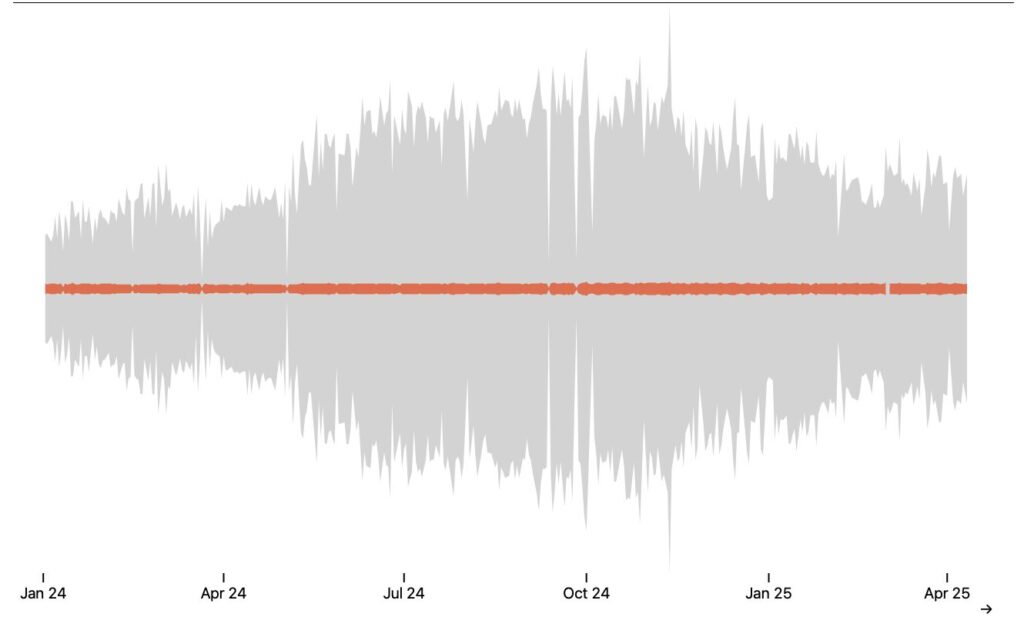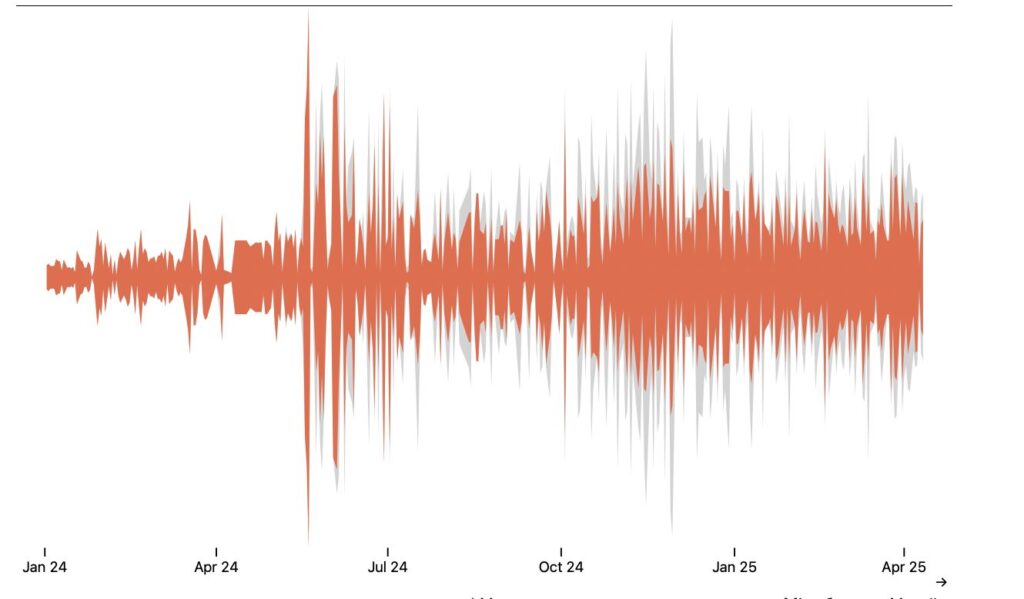Independent data organization ACLED systematically reduces Russian Defense Ministry casualty claims from hundreds to just 10 deaths when cross-verification fails, according to researchers tracking the war in Ukraine.
The organization, which employs over 200 specialists documenting conflicts worldwide, maintains a team of six researchers in Ukraine processing a fixed list of sources daily.
“In some countries, only a few sources report on war. Ukraine has many sources. But this doesn’t always make analysis easier: repetition, intensity and oversaturation make identifying new trends difficult,” Senior analyst Nikita Gurkov said.
ACLED’s methodology involves checking Russian government sources, Ukrainian government sources, and independent media, but uses a broader range of materials for verification. Researchers examine additional resources, study photo and video materials, and employ OSINT methods to confirm or refute data from primary sources.
“We simply reduce these numbers automatically from 150 or 300 to 10, so as not to create false trends,” explains Olga Polishchuk, ACLED’s research director for Eastern Europe, the Caucasus and Central Asia. The organization marks such entries with low accuracy ratings and mandatory notes indicating the Russian Defense Ministry as the source.
ACLED’s database shows the stark difference between Russian claims and verified data. A chart tracking the period from January 2024 to April 2025 displays Russian Defense Ministry casualty claims in gray and ACLED’s corresponding database entries in red. The visual demonstrates how the organization systematically reduces unverified Russian numbers to a standard 10 deaths when no independent confirmation exists.

ACLED’s database shows the stark difference between Russian claims and verified data. When Russian forces claimed massive Ukrainian casualties that other sources could not confirm, the organization entered the events but reduced death tolls to 10 with notes about the Russian Defense Ministry source.
The organization treats Ukrainian government reports as biased but finds them easier to verify due to independent Ukrainian and international media operating in Ukraine-controlled territory. ACLED often confirm the statements of the Ukrainian side. The difference is most often due to the fact that the Ukrainian side reports the total number of killed and wounded, while ACLED only reports deaths.

ACLED reportedly does not directly cooperate with the Ukrainian government for data collection, relying instead on public sources: official reports, media, social networks, and partner organizations.
Each researcher processes at least 100-200 events weekly. When different versions of events exist and researchers cannot confirm details, they choose the most conservative option, such as lower casualty numbers. Events that cannot be verified at all receive notes stating “number of casualties unknown.”
“If you want to compare data from December 2024 and May 2025, you must be sure we collected them the same way, and didn’t add new sources between those months, which could distort trends,” Polishchuk said.
When ACLED expands its source list, researchers first adjust previous period data based on new sources before publishing updates publicly, typically in six-month blocks.
The war’s scale presents unique challenges for analysts. Many settlements, high event concentration, and intensive information flow create both advantages and obstacles for documentation efforts, according to Gurkov.
Read also
-
Brussels pushes EU sanctions leadership amid Trump uncertainty, exposes Russia’s $ 1 trillion war windfall
-
Russia’s Tu-160 bomber use in missile attack last night proves Tu-95 shortage after operation Spiderweb, Militarnyi says
-
Mi-8 military helicopter blown up, Mi-35 wrecked as Ukraine hits Russia’s Bryansk airport, media says




